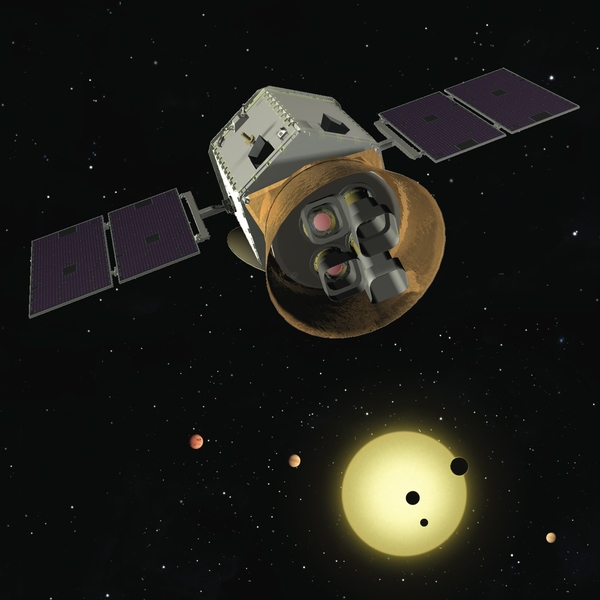The Transiting Exoplanet Survey Satellite (TESS) project at MIT has been named by NASA as one of the 11 proposals recently accepted for evaluation as potential future science missions, the space agency announced in a press release.
The project, led by principal investigator George Ricker, a senior research scientist at MIT’s Kavli Institute for Astrophysics and Space Research (MKI), would use an array of telescopes to perform an all-sky survey to discover transiting exoplanets, ranging from Earth-sized to gas giants, in orbit around the nearest and brightest stars in the sky.
"TESS will carry out the first-ever spaceborne all-sky transit survey, covering 400 times as much sky as any previous mission,” Ricker says. “It will identify thousands of new planets orbiting a broad range of stellar types, and with widely varying distances from their host star."
“We're very excited about TESS because it's the natural next step in exoplanetary science,” says Josh Winn, a member of Ricker’s team and the Class of 1942 Career Development Associate Professor of Physics.
Winn says ground-based telescopes have revealed many details about transiting exoplanets, from their orbits to their atmospheres and compositions. However, these telescopes mainly pick out giant exoplanets. NASA’s Kepler spacecraft has uncovered the existence of many smaller exoplanets, but the stars Kepler examines are faint and difficult to study. In contrast, TESS will examine a large number of small planets around the very brightest stars in the sky. What’s more, the telescope array may be able to spot multiple planets around a single star.
“Because TESS will view stars continuously for intervals ranging from a month to a year, we'll find lots of multiple-planet systems too,” Winn says. “And they will be around stars that are bright and easy to study further.”
TESS was one of five proposals selected as a potential “Explorer Mission,” and will receive $1 million to conduct an 11-month mission concept study. Project members include Ricker and Winn, along with Jacqueline Hewitt, professor of physics and director of the Kavli Institute for Astrophysics and Space Research; and Sara Seager, professor of physics and the Ellen Swallow Richards Professor of Earth, Atmospheric and Planetary Sciences. MKI research scientists Roland Vanderspek and Joel Villasenor serve as deputy-principal investigator and payload scientist, respectively, while principal research scientist Alan Levine will oversee software efforts for the mission. TESS team members also include NASA’s Goddard Spaceflight Center, Orbital Sciences Corporation, NASA’s Ames Research Center, the Harvard-Smithsonian Center for Astrophysics and the Space Telescope Science Institute.
Following the detailed mission concept studies, NASA plans to select up to two of the Explorer Mission proposals in February 2013. The missions would then proceed toward flight and some could launch by 2016.
"NASA continues to seek opportunities to push the cutting edge of science," said Paul Hertz, chief scientist for NASA's Science Mission Directorate. "Innovative proposals like these will help us better understand our solar system and the universe."
Publication Date:

Caption:
TESS's primary goal would be to identify terrestrialplanets orbiting nearby stars.
Credits:
Image courtesy of the TESS team





